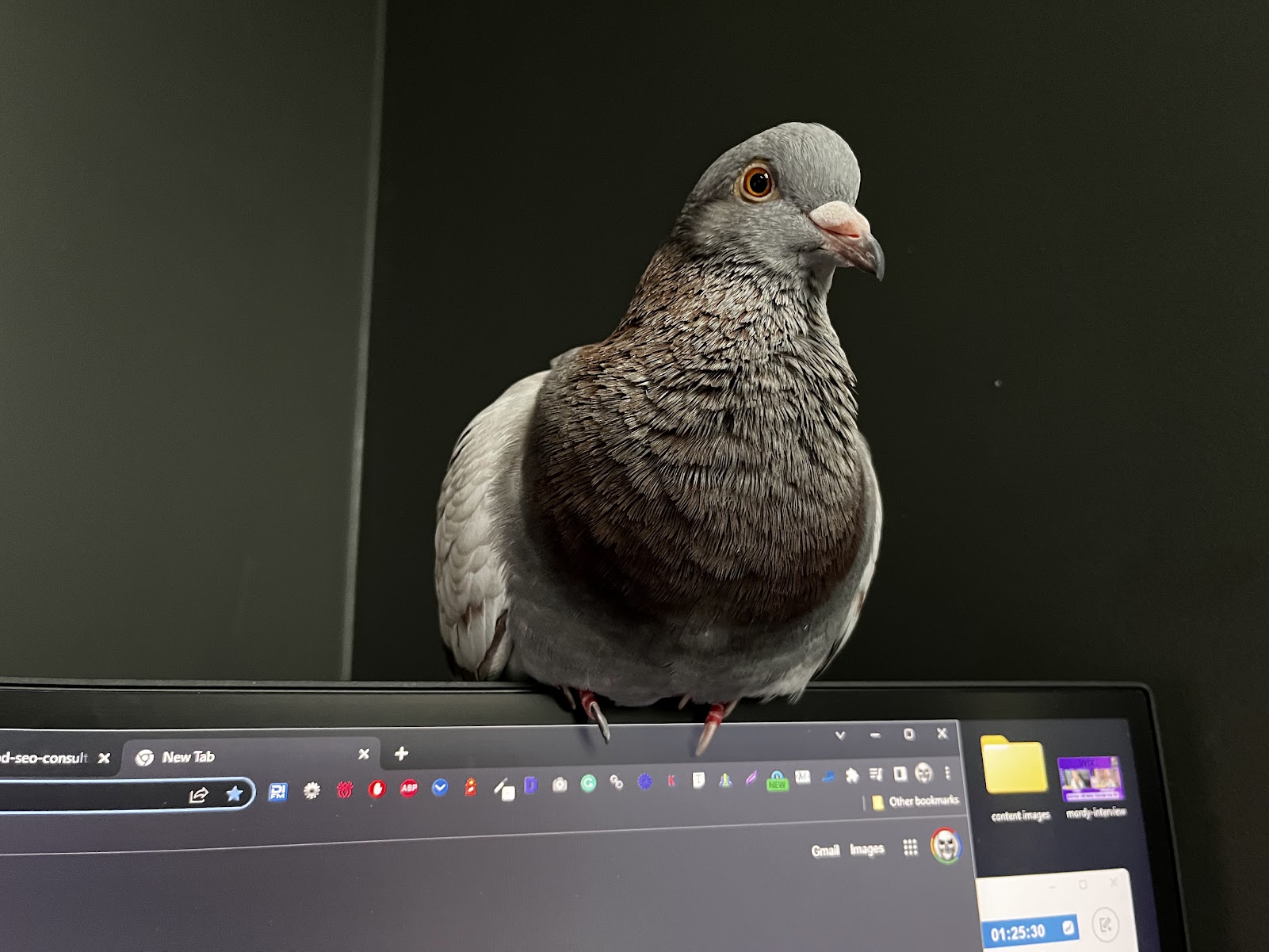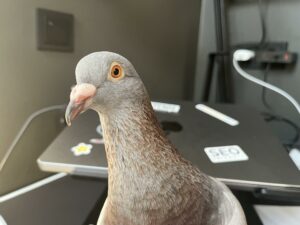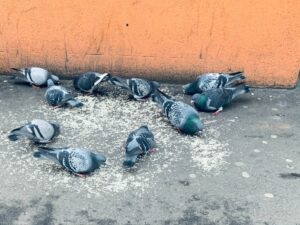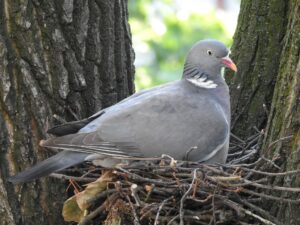Today, we’re going to dive into an interesting question: Do pigeons have teeth? Now, before you start imagining pigeons flashing a pearly white smile, let’s clear the air.
This is more about understanding pigeon anatomy and how they manage to eat and digest their food without the chewing mechanism that teeth provide.
It’s all pretty fascinating, really, and offers some great insight into how these birds have adapted to thrive in their environments.
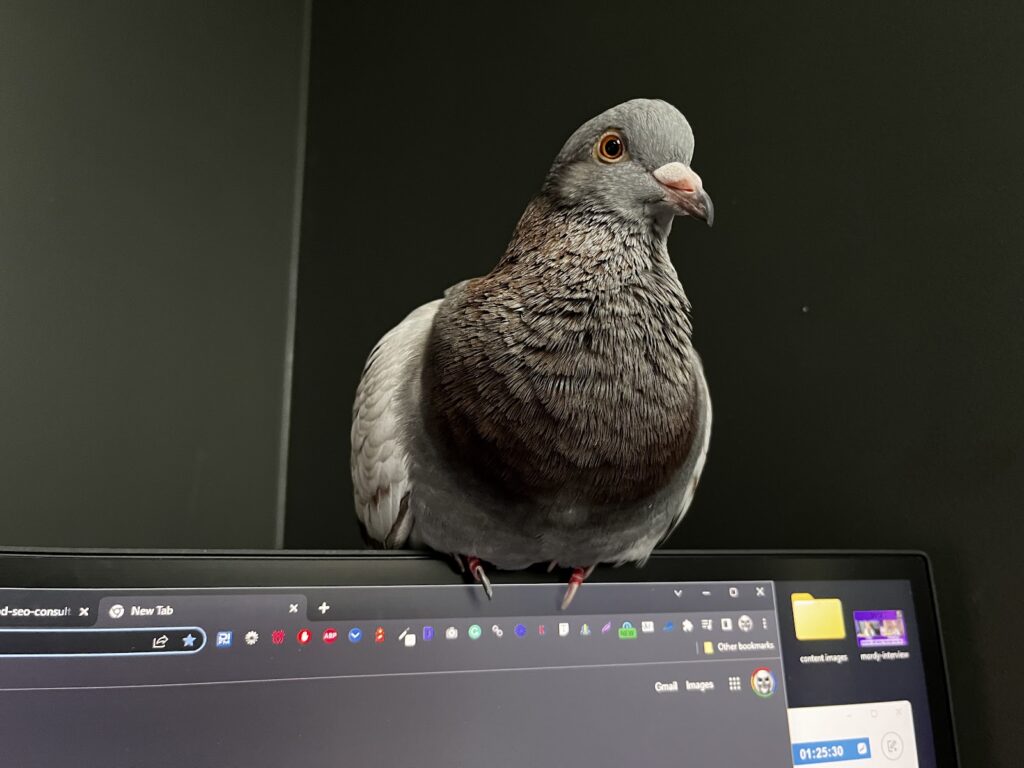
JUMP TO
Do pigeons have teeth? TL;DR
TL;DR: Pigeons, like all birds, do not have teeth. Instead, they rely on their strong and sensitive beaks to pick up and crack open their food. They also have a specialized part of their digestive system – a crop for softening food and a gizzard for grinding it down. This unique adaptation allows them to effectively process food without the need for teeth.
Do pigeons have teeth? Pigeon anatomy
Let’s look at the pigeon anatomy so that you can fully understand how these creatures “work”.
Description of Pigeon’s Beak
Let’s start with the beak – the pigeon’s equivalent of our mouth. But don’t be fooled, it’s not just for pecking at food or cooing sweet nothings to their mates. The pigeon’s beak is a powerful tool, adapted for their diet and lifestyle.
- Shape: Pigeons have a relatively short, slender beak compared to other birds. This shape is perfect for their primary diet of seeds and grains.
- Strength: Despite its slender appearance, a pigeon’s beak is incredibly strong, allowing them to crack open seeds and nuts.
- Sensitivity: The beak is highly sensitive, helping the pigeon identify and select food.
Pigeon’s Digestive System
Alright, now let’s move on to the digestive system. This is where the absence of teeth really comes into play. You see, pigeons have a unique way of processing food that doesn’t require the grinding and chewing action that teeth provide.
- Crop: Pigeons, like many birds, have a part of their esophagus called the ‘crop’. This is where food is stored and softened after being swallowed.
- Gizzard: After the crop, the food moves to the gizzard, often referred to as the bird’s second stomach. The gizzard is a powerful organ, capable of grinding down food, much like our own teeth would do.
So, there you have it. A quick overview of the pigeon’s beak and their unique digestive process. But let’s dive deeper, shall we?
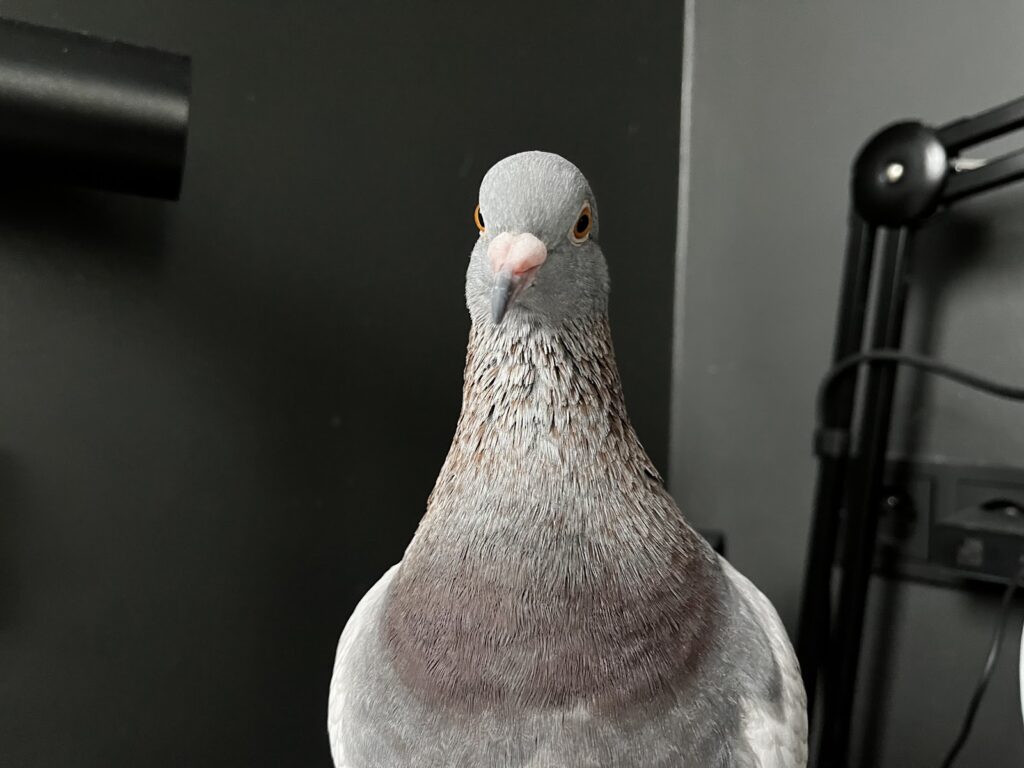
The Truth About Pigeons and Teeth
And now onto the entire truth about whether pigeons have teeth.
Do Pigeons Have Teeth?
Alright, it’s time for the big question: Do pigeons have teeth? The short answer is no, they don’t. Not like humans, dogs, or even alligators do. In fact, no bird species have teeth. It’s not just a pigeon thing. Teeth, as we know them, disappeared from birds’ ancestors around 116 million years ago. Today, birds are characterized by their toothless beaks, and pigeons are no exception.
The Role of Beak and Grit in Pigeon’s Feeding Process
Without teeth, how do pigeons manage to eat, especially harder foods like seeds and grains? This is where their beak and something called ‘grit’ come into play.
- Beak: As we’ve discussed, the pigeon’s beak is well adapted to their diet. They use it to pick up and crack open food, but not to chew it in the way we do.
- Grit: Grit is essentially small, hard particles, like sand or tiny stones, that pigeons intentionally eat. Why? This grit ends up in their gizzard, where it helps to grind down food, almost like how our molars would.
Check these articles:
- How To Train A Pigeon
- How Long Do Pigeons Live In Captivity?
- Are Doves Pigeons?
- What Do Pigeons Eat?
- Can Pigeons Eat Bread?
Comparing Pigeons with Other Birds
But how exactly do pigeons do in comparison to other birds?
Birds with Tooth-like Structures
While no birds have actual teeth, some do have tooth-like structures or adaptations that serve a similar purpose. Take geese, for example. They have serrated edges along their beaks that look a lot like tiny teeth. These ‘teeth’ or ‘tomia’ aren’t used for chewing, but they do help geese grip their food.
The Evolution of Bird Beaks
Bird beaks are a marvel of evolution, each perfectly adapted to a specific diet or lifestyle. From the sharp, hooked beak of a hawk designed for tearing meat, to the long, slender beak of a hummingbird suited for sipping nectar, these variations are incredible.
Pigeon beaks, while not as obviously specialized as some, are no less impressive. They’ve evolved to be perfect for the pigeon’s diet of seeds and grains – strong enough to break open food, and sensitive enough to select the good bits from the bad.
It’s a fantastic reminder of how nature always finds a way, even if it means ditching teeth for a beak and some grit!
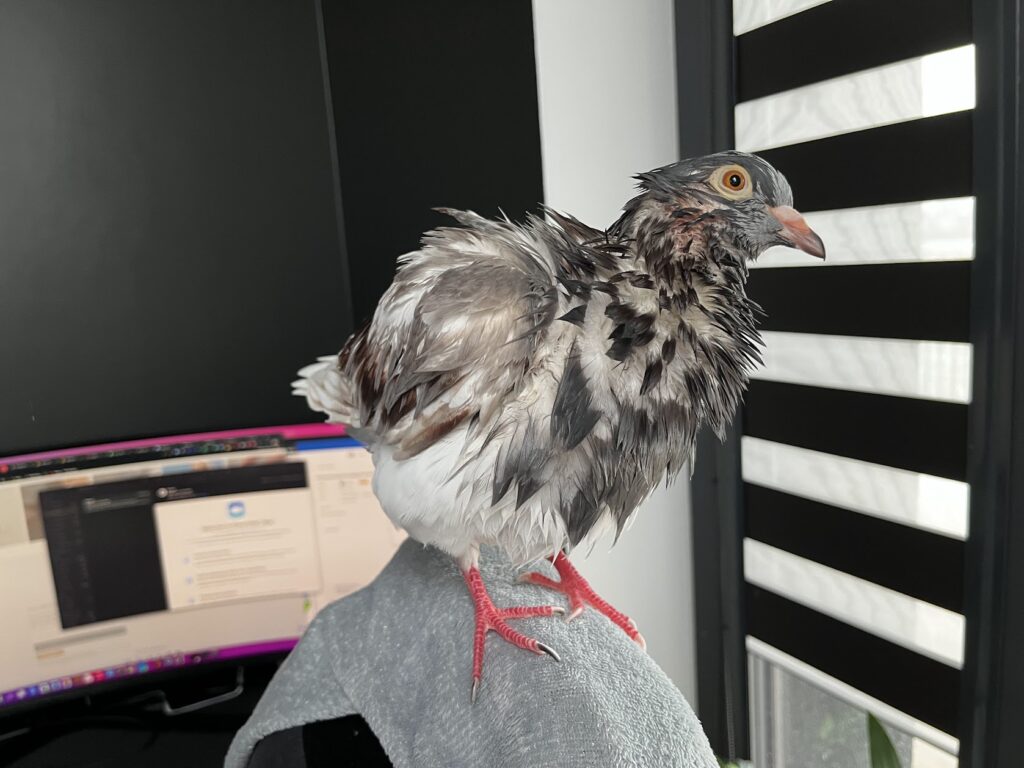
How Pigeons Eat and Digest Food
Now you are probably wondering how pigeons eat and digest food. Let me tell you all about it.
The Process of Ingesting Food
Let’s take a walk, or should I say, a flight, through the process of how pigeons eat and digest their food:
- Picking: Using their beak, pigeons pick up food, often seeds or grains. Remember, their beak is quite sensitive, helping them choose suitable food items.
- Swallowing: Pigeons don’t chew their food. They swallow it whole. This is where you might think, “Aha! They need teeth”. But no, they have a different strategy.
- Storing: The food goes down their esophagus and into a special pouch-like area called the crop. Here, the food is stored and also begins to soften.
The Role of Crop and Gizzard
Now let’s move on to the next stage in our pigeon’s meal journey:
- Transporting: The softened food gradually moves from the crop to the stomach. But here’s the kicker – birds have a two-part stomach.
- Grinding: The first part of the stomach uses enzymes to start breaking down the food. But the real magic happens in the second part, the gizzard. This muscular organ, along with the grit our pigeon has ingested, grinds down the food in much the same way as our teeth would.
So there you have it. Who needs teeth when you’ve got a crop and a gizzard?
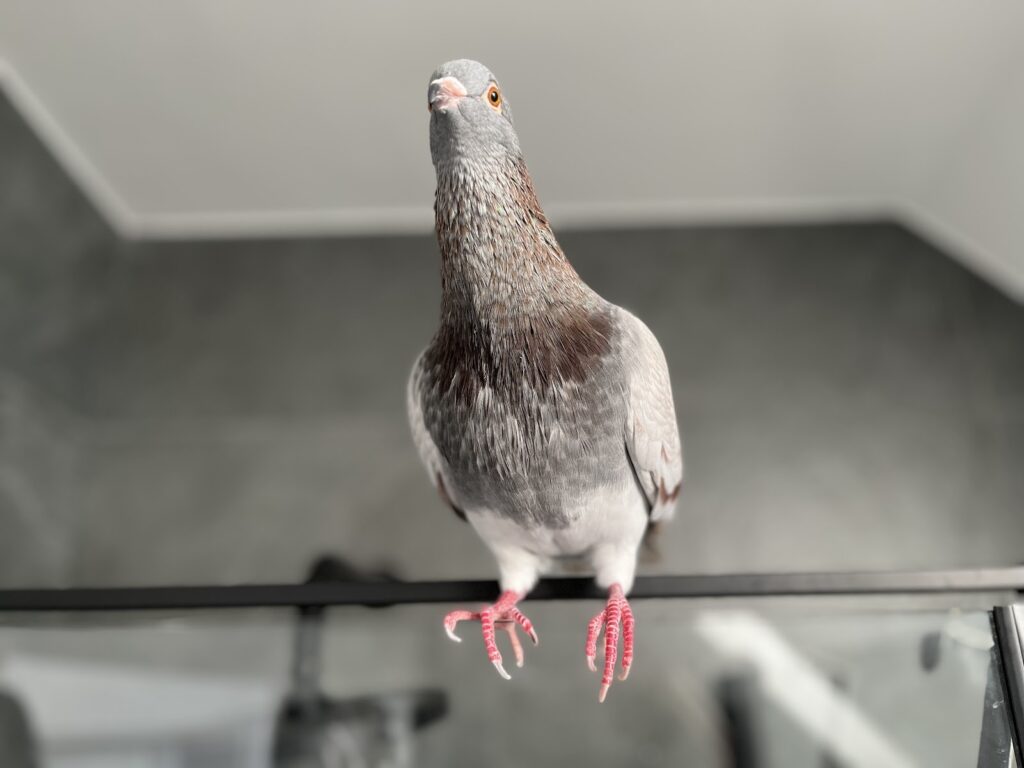
Conclusion
So, to wrap up our toothy—or rather, toothless—talk:
- Pigeons, like all birds, don’t have teeth. This is a trait shared by all bird species.
- Pigeons use their specially adapted beaks and something called ‘grit’ to eat and digest their food.
- The absence of teeth in birds showcases the remarkable adaptations and evolution of bird beaks, perfectly suited to their specific lifestyles and diets.
Understanding the unique adaptations of creatures like pigeons is a testament to the beauty and variety of nature. Pigeons, and birds in general, might not smile at us with a mouth full of teeth, but their toothless eating habits are a marvel of nature’s ingenuity. So next time you see a pigeon pecking away at the park, take a moment to appreciate these fascinating and resilient birds.
Do pigeons have teeth? FAQs
Do pigeons have teeth?
No, pigeons do not have teeth. Like all birds, their ancestors lost the ability to form teeth about 116 million years ago. Instead of teeth, pigeons use their beaks and ingest grit to help them eat and digest their food.
How do pigeons eat without teeth?
Pigeons use their beaks to pick up and crack open food, and they swallow it whole. They also ingest small, hard particles called grit, which helps them grind down food in their gizzard, a part of their digestive system.
Are there any birds that have teeth?
No bird species have teeth. Some birds, like geese, have serrated edges on their beaks that resemble teeth, but these are not true teeth. They are called tomia and help the bird grip its food.
What is a pigeon’s beak made of?
A pigeon’s beak is made of keratin, the same material that makes up human fingernails and hair. The beak is strong and sensitive, allowing pigeons to select suitable food items.
What is the gizzard and what role does it play in a pigeon’s digestion?
The gizzard is a part of a bird’s stomach that is muscular and strong. It uses the grit that the bird has ingested to grind down food, much like how our molars grind food. This allows the pigeon to digest its food effectively, despite not having teeth.

